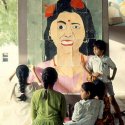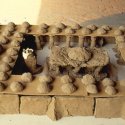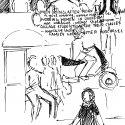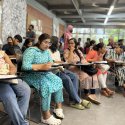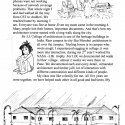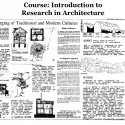Community Outreach
Summer Workshop for Children with a Focus on Architectural Heritage
Built Environment Education for Children is relatively a new concept gaining attention and acceptance the world over. It is based on the premise that the natural and the built environments are a vast resource as well as a tool for multi - disciplinary learning. The built environment is also directly related to the reality of people's lives and involves all senses in understanding it. Through its study, children can gain knowledge about history, the sense of place, relationship to one's culture and develop visual acuity to experience life. For many years, the organization has been involved in activities with children based on the premise that all children have a tremendous potential for creativity and possess an element of fantasy as well as the sense for the picturesque. This, along with their sensorial and cognitive perceptions of the surroundings, can be utilized in the built environment education through imaginative methods. We are interested in conducting this workshop if there is an opportunity.
Workshop for Appreciating Architecture and the City of Ahmedabad
Originally known as Ashaval or Ashapalli, Ahmedabad has been a trading town since its early years. Established on the banks of Sabarmati River in 1411 by Ahmed Shah Badshah during the Indo Sultanate period, it has a historic inner city with a vibrant urban core and extensive modern development all around. During the colonial rule, it was famous as the "Manchester" of India. It has maintained its unique identity through different historical periods. Seventh largest city in India today, it has population close to 4 million. The city is growing at a rapid rate. Along with many historic monuments, Ahmedabad is also rich in modern buildings designed by nationally and internationally well-known architects. With four buildings designed by Le Corbusier, one campus by Louis Kahn and several edifices by Indian architects like B V Doshi, Kanvinde, Charles Correa and a host of younger designers, the city is almost a 'Mecca' of modern architecture. This workshop, meant for non-architects, attempts at understanding history, appreciating traditional and modern architecture, and learning about the city. The activities include one or two slide shows, discussions with exercises and site visits. It was held at the Kanoria Centre for the Arts in Ahmedabad in 2005. We are interested in conducting this workshop if there is an opportunity.
Gender Workshop
Though largely assumed to be a gender-free discipline, architecture transcends the neutrality of geometrically determined and physically defined structures to become a site of lived life, where cultural processes, gender transactions, and spatial productions are continually enacted. The under representation of binary folks’ women’s body and experiences creates a possible setting for subordination and exploitation. From public to private space (from the city to the dwelling) and the grey areas in-between, gender sensitivity helps shape design and research projects. It is important to apply this knowledge to the design of public buildings, large scale urban projects, as well as planning and architecture. In the twenty-first century, it is vital for students to develop an understanding of gender as a theoretical construct in the perception and process of design.
The workshop attempts to expose the students to look at the creation and consumption of the built environment from the analytical construct of gender. It will examine the relationship of space and behaviour of men and women at various scales and functions. Through observation, conversation, and recordings we hope to study their activities and categorize them under gender, age, and class. While touching upon basic concepts of feminism, the workshop hopes to develop visual literacy for “reading” space, and for understanding the ways in which landscapes organize and reflect gendered meanings in the Indian context. We are interested in conducting this workshop if there is an opportunity.
Introduction to Research in Architecture
Architectural research forms an integral part of the discipline of architecture. Today an increasing need is felt by architects to lean towards contextual sources and preferences. It is a well-established fact that in India there is an acute absence of adequate publications\reference materials which are historical, regional, or critical in nature, especially for the period covering the past century or as recent as the contemporary decade. Despite the existence of more than 400 institutions for architectural education, the rigor of research is yet to develop in general among students and faculty. One can also say that there is a need for architectural historians, critics and even journalists to contribute to the Indian architectural scene. In this respect, research not only helps the student evolve one area or areas of special interests but also adds to his\her training and development of analytical\communication skills.
The emphasis of this workshop is on understanding basic principles of the research process with a focus on architectural research and its application at the undergraduate level. One aim of the workshop is to prepare a background in architectural research for an advanced level student and another is to increase their awareness to undertake a research dissertation. The workshop, thus, attempts to give the student a general understanding of what is architectural research, its tools, techniques, and methods of data collection as well as to prepare the student to write a research proposal for a dissertation as a first experience in this area. The emphasis is on the development of writing and composing skills including the creation of an attitude towards analytical reading.
Some of the topics included in the workshop are Research in architecture, definition/aims, profession v/s academics, pure and applied, relationship to design, research as a process, its three stages, methods of data collection, dependence on social science techniques, developing a topic of interest, limiting its scope, writing a research proposal for a paper, reporting as the termination of the research process, addressing the audience, the structure of a report, requirement of a different set of skills, language and style, importance of presentation, use of tables and graphics, designing a page, titles, inclusion of illustrations and relating them to text, technical and formal writing, appendices, glossary, notation system, cross referencing, etc.

